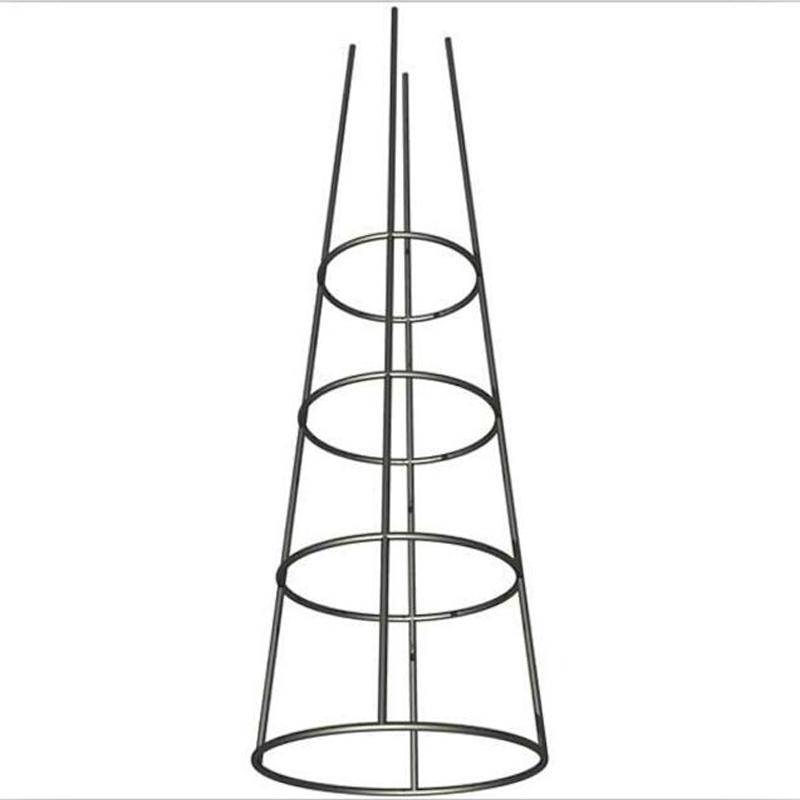
- Mobile Phone
- +8613931874955
- sales@cntcmetal.com
concrete wire spacer
Understanding Concrete Wire Spacers Importance and Applications
Concrete wire spacers are essential components in the construction and civil engineering industries, primarily used to maintain proper spacing between reinforcing bars within concrete structures. This article delves into the significance of wire spacers, their various applications, and the types of spacers available in the market.
What Are Concrete Wire Spacers?
Concrete wire spacers are small, typically cylindrical or square-shaped devices made from concrete or durable plastic. They ensure that rebar is positioned correctly within the concrete pour. Proper placement of rebar is crucial for structural integrity, as it helps the concrete withstand tension and enhances its overall strength. Wire spacers are designed to hold the rebar in place, maintaining an optimal distance between the reinforcing bars and the concrete formwork. This position minimizes the risk of corrosion and other potential damage over time.
Importance of Wire Spacers in Construction
1. Structural Integrity One of the primary functions of concrete wire spacers is to ensure the correct spacing of rebar, which is vital for load distribution within a concrete structure. Proper spacing allows the concrete to adhere to the rebar adequately, enhancing the overall strength and integrity of the structure.
2. Durability By ensuring that the rebar is adequately covered by concrete, wire spacers help protect it from environmental factors that can lead to corrosion and deterioration. This is particularly important in areas exposed to moisture or harsh weather conditions.
3. Cost-Efficiency Utilizing wire spacers can significantly reduce the risk of structural failure caused by improper rebar placement. This, in turn, minimizes the need for costly repairs or reinforcements in the future.
4. Quality Assurance Consistency in the spacing of rebar leads to a higher quality finish for the concrete surface. When the rebar is correctly positioned, the curing process is more uniform, leading to fewer imperfections.
Types of Concrete Wire Spacers
Concrete wire spacers come in various sizes and designs to cater to different construction needs
. Here are some common types1. Standard Wire Spacers These are the most commonly used wire spacers, typically made from steel or galvanized wire. They are available in various heights and diameters to suit different rebar sizes.
concrete wire spacer

2. Plastic Wire Spacers Lightweight and resistant to corrosion, plastic wire spacers are an excellent alternative to traditional metal spacers. They are often used in environments where moisture is prevalent, as they do not rust or deteriorate in wet conditions.
3. Adjustable Spacers These spacers are designed with adjustable heights, allowing for versatility in different construction projects. They can accommodate various rebar spacing requirements, making them suitable for custom applications.
4. Continuous Wire Spacers These spacers consist of a long, continuous wire that provides support along the length of the rebar. They are ideal for long stretches of rebar, ensuring continuous spacing and stability.
Applications of Concrete Wire Spacers
Concrete wire spacers are widely used in various construction projects, including
1. High-Rise Buildings In skyscrapers, maintaining the integrity of the rebar placement is crucial due to the immense weight and structural demands placed on these structures.
2. Bridges and Overpasses Given the dynamic loads that bridge structures must endure, proper rebar placement with the help of wire spacers is vital for their longevity and safety.
3. Pavements and Roads Wire spacers are also used in the construction of pavements, ensuring that the rebar is positioned correctly to support heavy traffic loads.
4. Foundations In concrete foundations, wire spacers ensure that rebar is placed at the right depth, which is essential for the foundation's stability.
Conclusion
Concrete wire spacers play a pivotal role in modern construction practices. Their contributions to structural integrity, durability, and cost-effectiveness make them indispensable. With various types available, construction professionals can choose the most suitable wire spacers for their specific applications, ensuring that projects are completed efficiently and safely. As construction techniques evolve, the importance of such simple yet effective tools will continue to be recognized, solidifying their place in the industry for years to come.
share:
-
Why Sacrificial Formwork Is Redefining Underground ConstructionNewsJun.06,2025
-
The Structural Dynamics of Modern Concrete: How Snake Spacers Revolutionize Flexible ReinforcementNewsJun.06,2025
-
Snake Spacers Smart-Lock Concrete Reinforcement with Surgical PrecisionNewsJun.06,2025
-
Snake Spacers: Reinforcement Precision for Modern Concrete ProjectsNewsJun.06,2025
-
Snake Spacers Powering Concrete's Structural DNANewsJun.06,2025
-
Slither into Success: Snake Spacers' Precision Bite for Unbreakable ReinforcementNewsJun.06,2025
-
Sacrificial Formwork: Building Stronger, Faster, and Safer StructuresNewsJun.06,2025



















